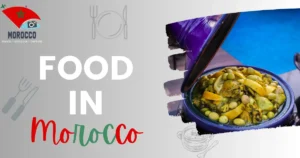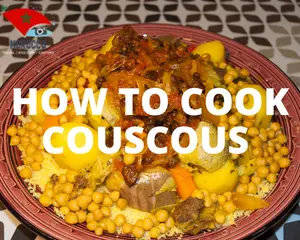Delicious Moroccan Cuisine
Morocco, a North African gem, is not only known for its breathtaking landscapes and vibrant traditions but also for its mouthwatering cuisine. The delectable fusion of flavors, aromatic spices, and unique cooking techniques make Moroccan cuisine a culinary adventure like no other. In this article, we will explore the rich tapestry of Delicious Moroccan Cuisine, from its origins to its influence on the global gastronomic stage.
The Blend of Flavors
Moroccan cuisine is a delightful blend of flavors that tantalizes the taste buds. At its core, Moroccan food combines Berber, Arab, and Mediterranean influences, resulting in a harmonious marriage of sweet, savory, and spicy flavors. Key ingredients like saffron, cumin, coriander, and cinnamon are used generously to create signature dishes that leave a lasting impression.
Traditional Moroccan Dishes
Moroccan cuisine boasts a wide array of traditional dishes, each with a unique taste and story. The beloved tagine, a slow-cooked stew, is a symbol of Moroccan hospitality. The mouthwatering couscous is another staple, traditionally enjoyed on Fridays with a hearty vegetable and meat stew. And let’s not forget pastilla, a sweet and savory pastry filled with a delicious mixture of pigeon meat, almonds, and exotic spices.
The Art of Tagine Cooking
The tagine, a clay or ceramic pot with a conical lid, is not just a cooking vessel but also a piece of art. This unique cookware has been used for centuries to prepare flavorful dishes like lamb tagine with apricots and chicken tagine with preserved lemons. The slow-cooking method ensures that the flavors meld together beautifully.
Exquisite Couscous Creations
Couscous, a staple of Moroccan cuisine, is often served with vegetables and tender meat. The grains are steamed to perfection, resulting in a light and fluffy texture that complements the hearty stews it accompanies. Couscous is both a symbol of Morocco and a testament to its culinary excellence.
Moroccan Street Food
Exploring Moroccan cuisine isn’t complete without savoring its vibrant street food. The bustling souks of Marrakech and other cities are a treasure trove of flavors. Try classics like grilled lamb skewers, crispy seafood bastilla, and Moroccan pancakes known as “msemmen.” The burst of flavors in each bite is a testament to the country’s rich street food culture.
Moroccan Beverages
Moroccan dining is often accompanied by refreshing beverages. Mint tea, known as “atai,” is a ubiquitous choice, served in ornate glasses with a generous amount of sugar. Orange blossom water is another essential ingredient in many desserts, lending a delicate floral aroma to sweets and pastries.
Moroccan Desserts
No Moroccan meal is complete without a sweet ending. The country’s dessert selection is as diverse as its main courses. Delight in honey-drenched pastries like baklava or indulge in sesame and almond-based sweets. These desserts showcase the intricate culinary skills of Moroccan pastry chefs.
Preparing a Moroccan Feast
Bringing the flavors of Morocco into your kitchen is an exciting adventure. To create an authentic Moroccan feast, it’s crucial to source high-quality ingredients and spices. Seek out saffron, preserved lemons, and Ras el Hanout, a spice blend that adds a signature Moroccan flavor to your dishes.
Dining Etiquette in Morocco
When enjoying Moroccan cuisine, it’s essential to embrace the local dining customs. Moroccans share their meals family-style, and it’s customary to eat with your hands. Engaging in these traditions enhances the culinary experience and fosters a deeper understanding of Moroccan culture.
Health Benefits of Moroccan Cuisine
Moroccan cuisine is not only a feast for the taste buds but also a nourishing experience. Many dishes are rich in vegetables, legumes, and lean meats, making it a healthy option. The Mediterranean diet influences Moroccan food, emphasizing the use of olive oil and fresh ingredients.
The Culinary Diversity of Morocco
Morocco’s culinary diversity is a testament to its rich history and geography. Each region boasts its unique flavors, from the spicy dishes of the north to the seafood delights of the coast. Exploring the country’s diverse culinary landscape is a culinary journey in itself.
Moroccan Cuisine in Pop Culture
Moroccan cuisine has left a significant mark on the global culinary stage. Dishes like tagine and couscous have gained international popularity, making their way into the kitchens of food enthusiasts worldwide. The flavors of Morocco continue to inspire chefs and home cooks alike.
Conclusion
Delicious Moroccan Cuisine is a journey of flavors, history, and culture. The country’s cuisine is a reflection of its rich heritage and the warmth of its people. Whether you’re savoring a tagine, relishing couscous, or exploring the vibrant street food scene, Moroccan cuisine promises an unforgettable gastronomic adventure.
FAQs
- What is the most famous Moroccan dish?
- Tagine, a slow-cooked stew, is one of the most famous Moroccan dishes known for its delicious flavors.
- How is Moroccan couscous different from other types of couscous?
- Moroccan couscous is steamed to create a light and fluffy texture, often served with savory stews.
- What are some traditional Moroccan street foods to try?
- Popular Moroccan street foods include grilled lamb skewers, seafood bastilla, and msemmen (Moroccan pancakes).
- Is Moroccan cuisine healthy?
- Yes, Moroccan cuisine often includes a variety of vegetables, legumes, and lean meats, making it a healthy option.
- How has Moroccan cuisine influenced international food culture?
- Moroccan dishes like tagine and couscous have gained popularity worldwide and continue to inspire chefs globally.
Enjoy the flavors of Morocco and embark on a culinary journey filled with exquisite tastes and cultural richness.

